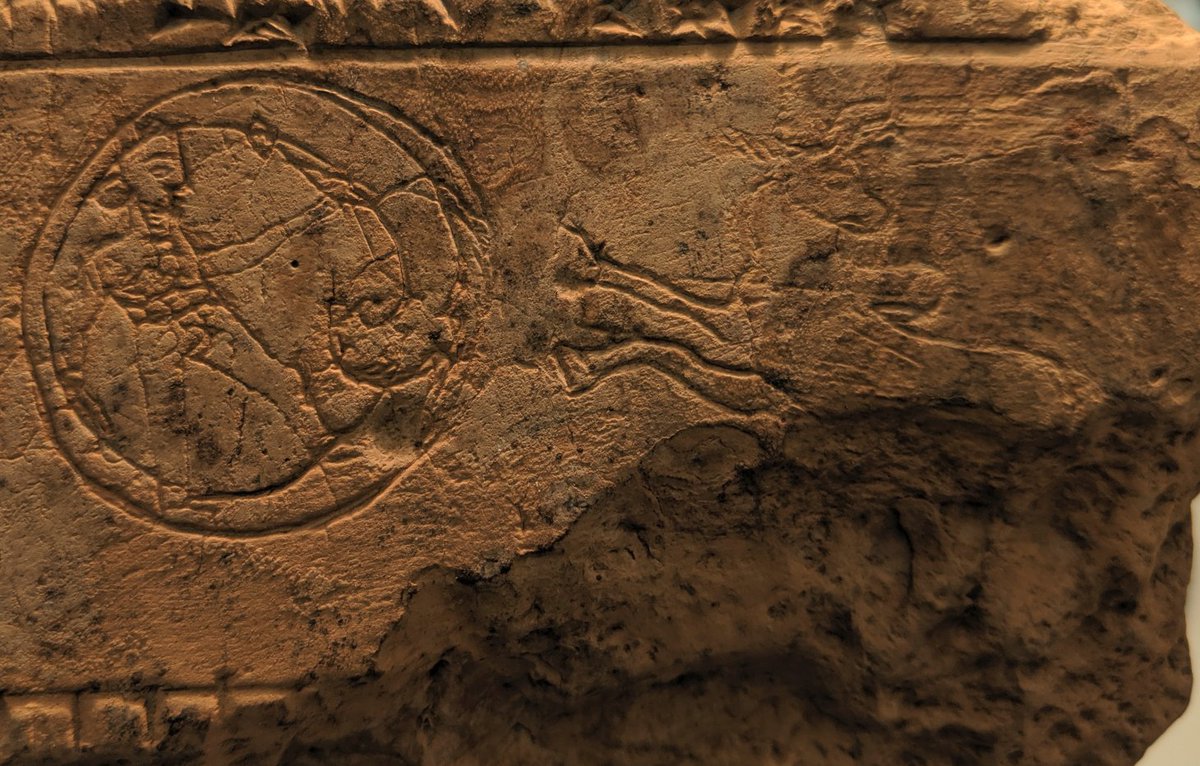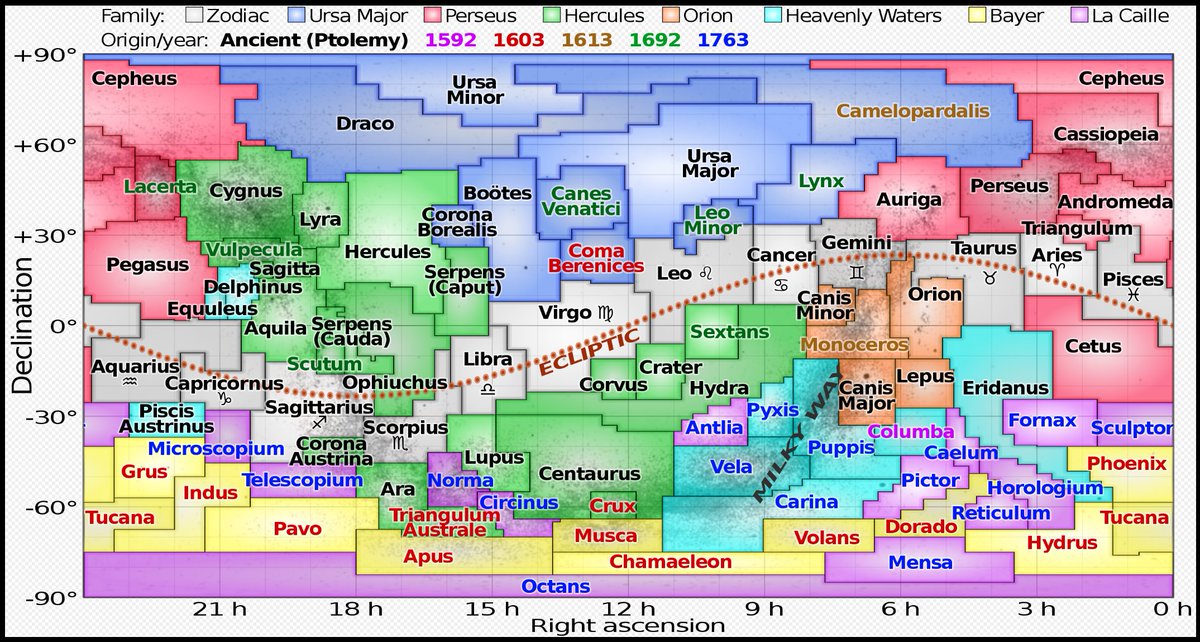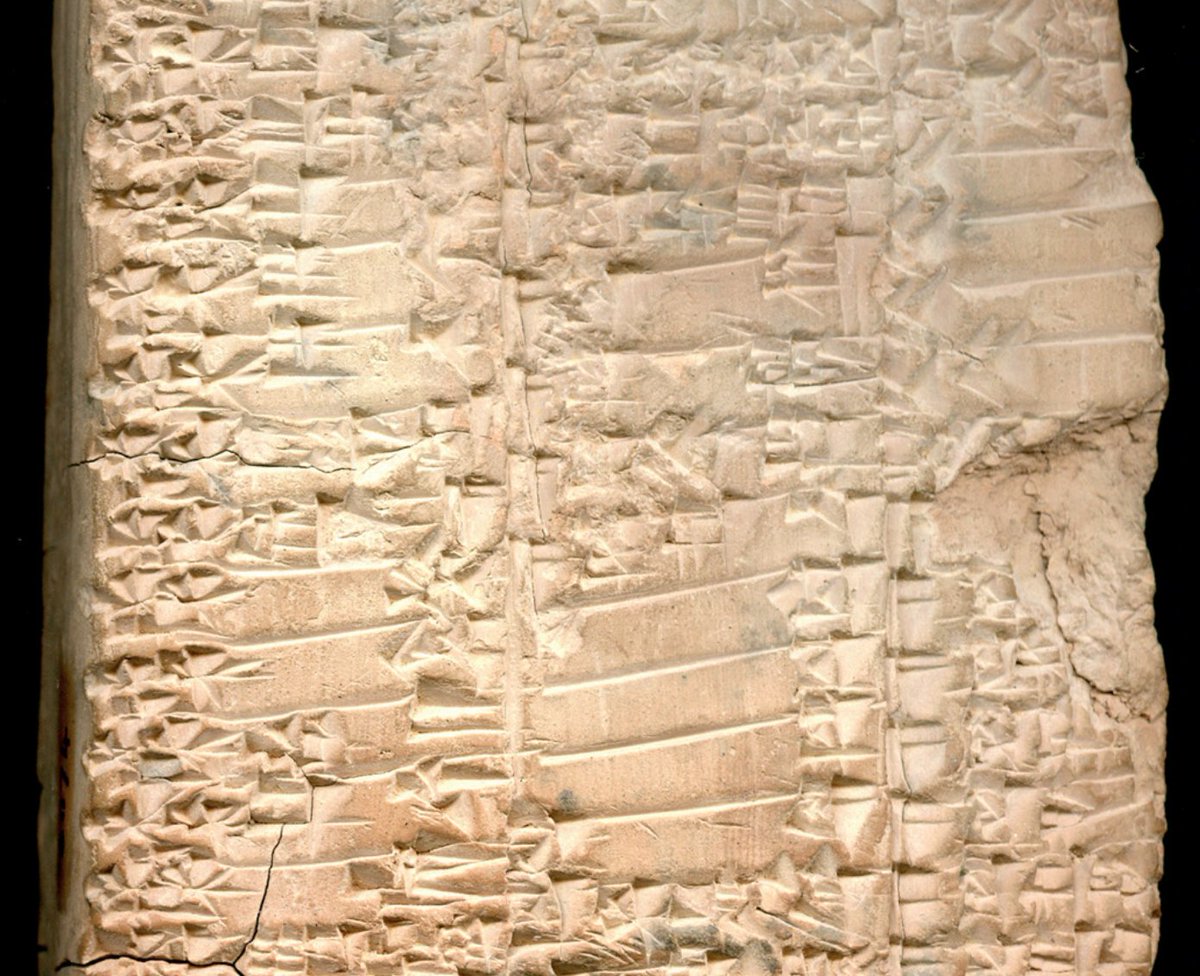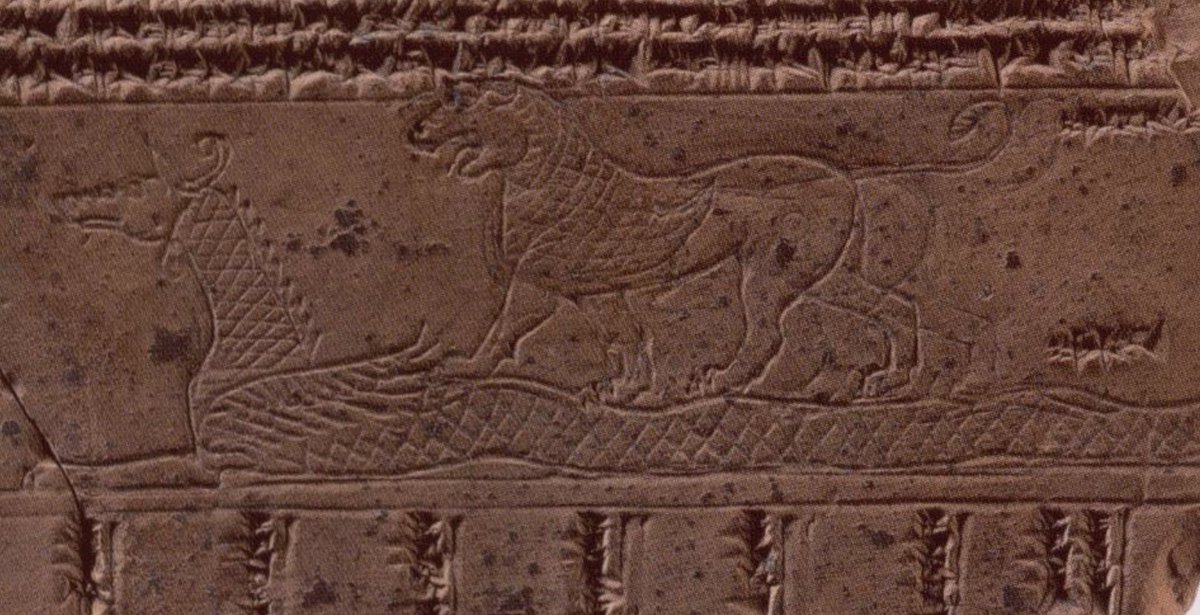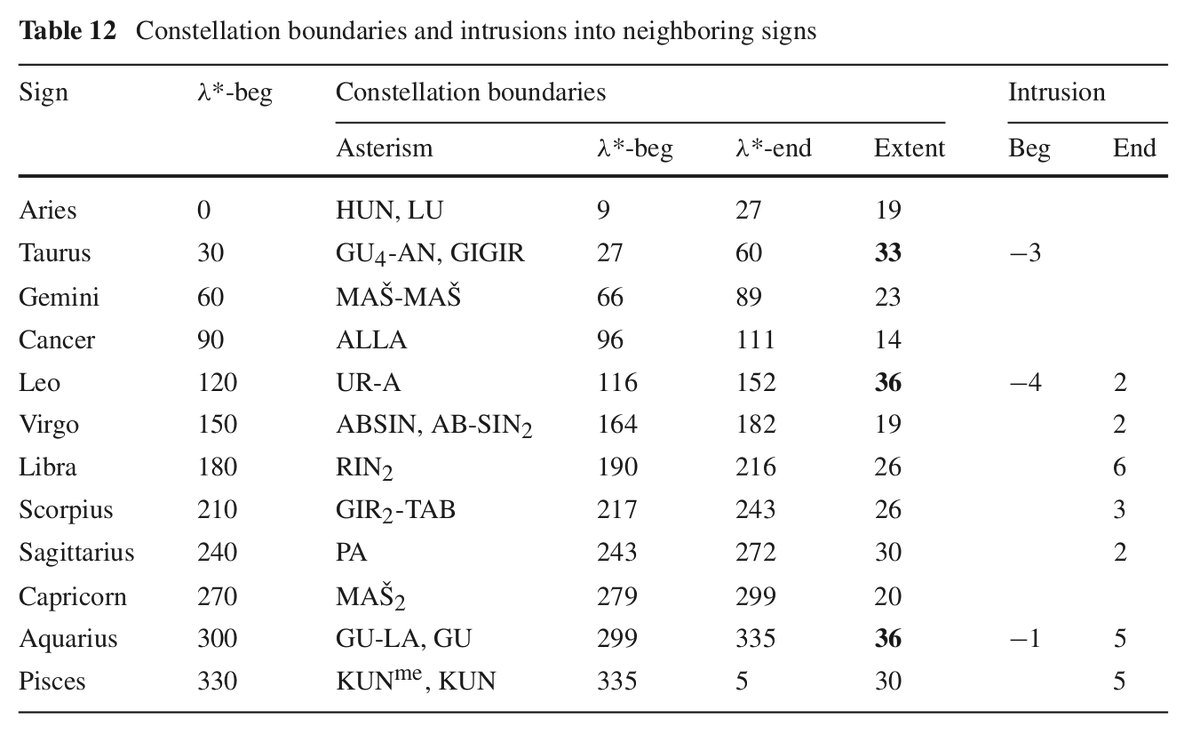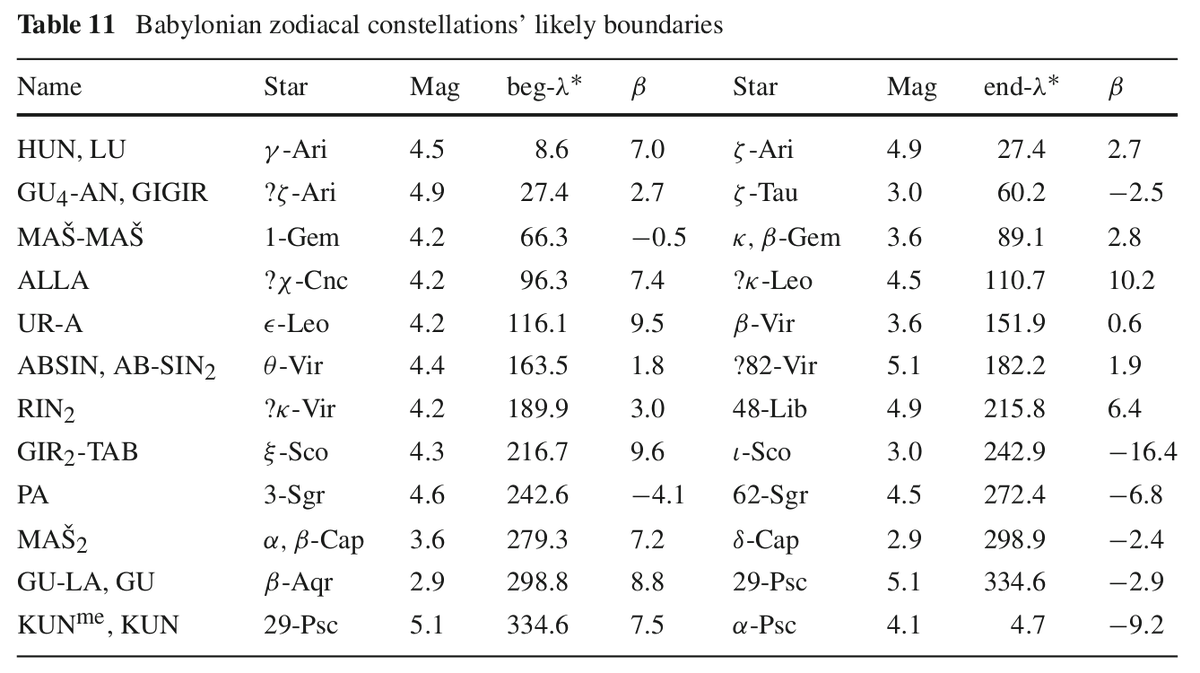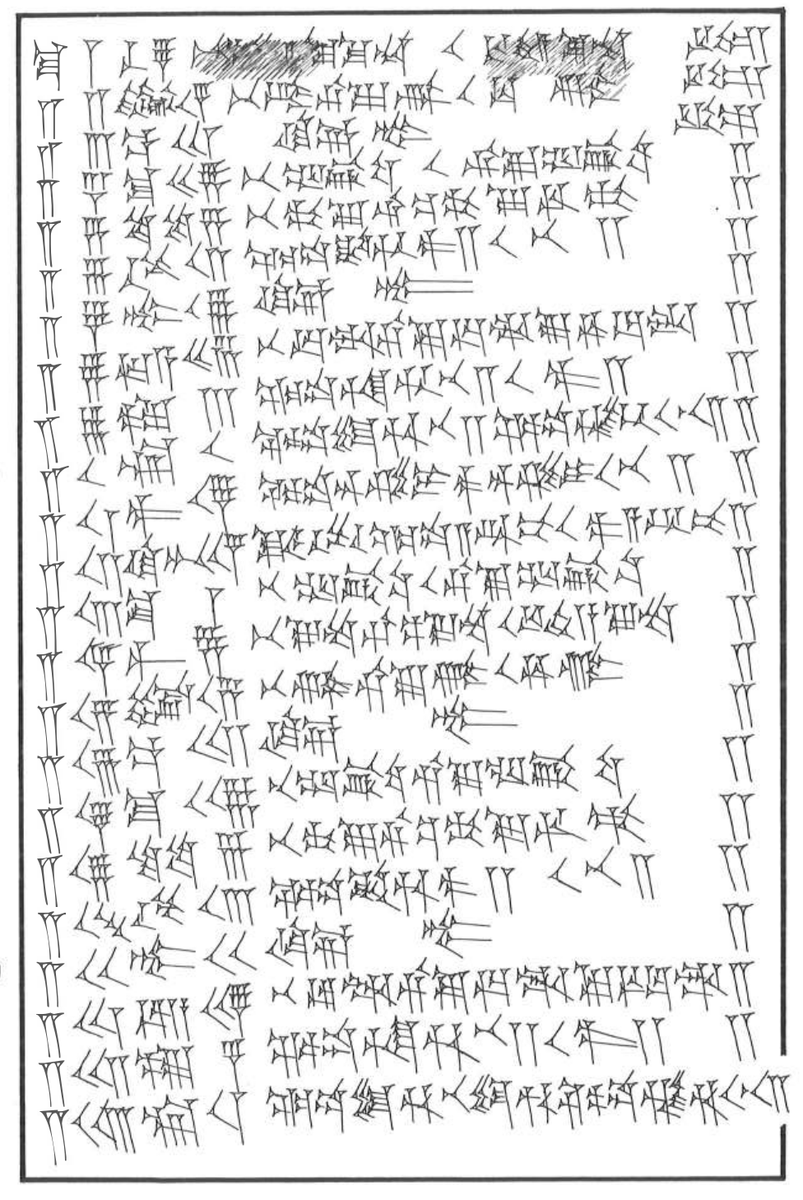Why is the 13th zodiac sign a perennial mystery? I thought it& #39;d be fun to do a thread on the history of the zodiac and how we actually know where these invisible divisions of the sky start and end... (Image of VAT 7851 with the moon and the zodiac sign Taurus)
This was prompted by an article in Vice back in July ( https://www.vice.com/en_in/article/3azpyv/nasa-13th-zodiac-sign-ophiuchus-zodiac-astrology)">https://www.vice.com/en_in/art... which links to an older post by NASA ( https://spaceplace.nasa.gov/starfinder2/en/ )">https://spaceplace.nasa.gov/starfinde... which is good but I have minor quibbles with... In any case neither answers the question of how we know where the signs are in the sky...
Because the constellations behind the zodiac signs are not perfectly uniform, folks have tried to fit another zodiac sign into some extra space around Scorpio (hence the fabled 13th sign). But why is it 12 in the first place, and why don& #39;t the constellations match up?
Luckily the extensive records of observation and astronomical/astrological calculations from Mesopotamia can provide us all the data we need to understand how the zodiac signs were derived and where the boundaries lie between each sign.
Simply put, the signs of the zodiac are named after existing constellations in the sky, the constellations and stars were counted and named early on. Here& #39;s an example from the Old-Babylonian period ( http://cdli.ucla.edu/P229320 )">https://cdli.ucla.edu/P229320&q...
But the signs of the zodiac are uniform 30° arcs of the sky. The boundaries between them do not line up with the existing constellations (never mind the space between!). How did ancient astronomers know where one sign began and another ended, or when a planet was in a sign?
Unfortunately, there& #39;s no handy cuneiform table with the zodiac signs and their locations in the sky... but we do have lots and lots (and lots!) of observational data, so we can reconstruct these invisible divisions in the sky. (Image VAT 7487 with the sign Leo)
This is exactly what J. P. Britton did. He used the extensive records of observation preserved on cuneiform texts to figure out where in the sky celestial bodies would shift between zodiac signs and was able to produce this table (Archive for the History of Exact Sciences 64):
You& #39;ll notice that the constellations behind the signs (i.e. UR-A which means "Lion") is wider than Leo, some are larger some are smaller (see the column marked "Extent"). It should be clear that our signs of the zodiac ultimately derive from the Babylonian signs/constellations.
This means that the constellations had rough fixed divisions and also that invisible lines of the zodiac did not line up (perfectly) with the constellations. So the Babylonian astronomers had to use other stars in the sky to mark the divisions of the zodiac:
So what does this mean for the mythical 13th sign? Well it shows that the 12 signs of the zodiac were not picked because they perfectly fit the sky. Rather 12 is a great number for calculation. And so they tried to find 12 constellations that roughly matched.
But it should be clear that the signs of the zodiac are very artificial. Even the Babylonian astronomer/astrologers knew this, hence why they needed other stars to determine where a sign started or ended. The zodiac was a tool for calculating and predicting astronomical events.
Of course the signs are also very useful for making all sorts of interesting connections. This text from Hellenistic Uruk (SpTU III/104) contains lists of medical ingredients derived from zodiac signs (Crab blood, lion hair etc...)
In sum, why is there no 13th sign? Because 12 is a better number... why do we care? Because the zodiac is really interesting and was a brilliant invention for both mathematical astronomy and making meaning in daily life... and who can we thank? Babylonian astronomers of course!

 Read on Twitter
Read on Twitter